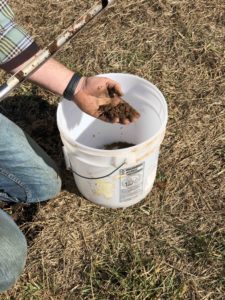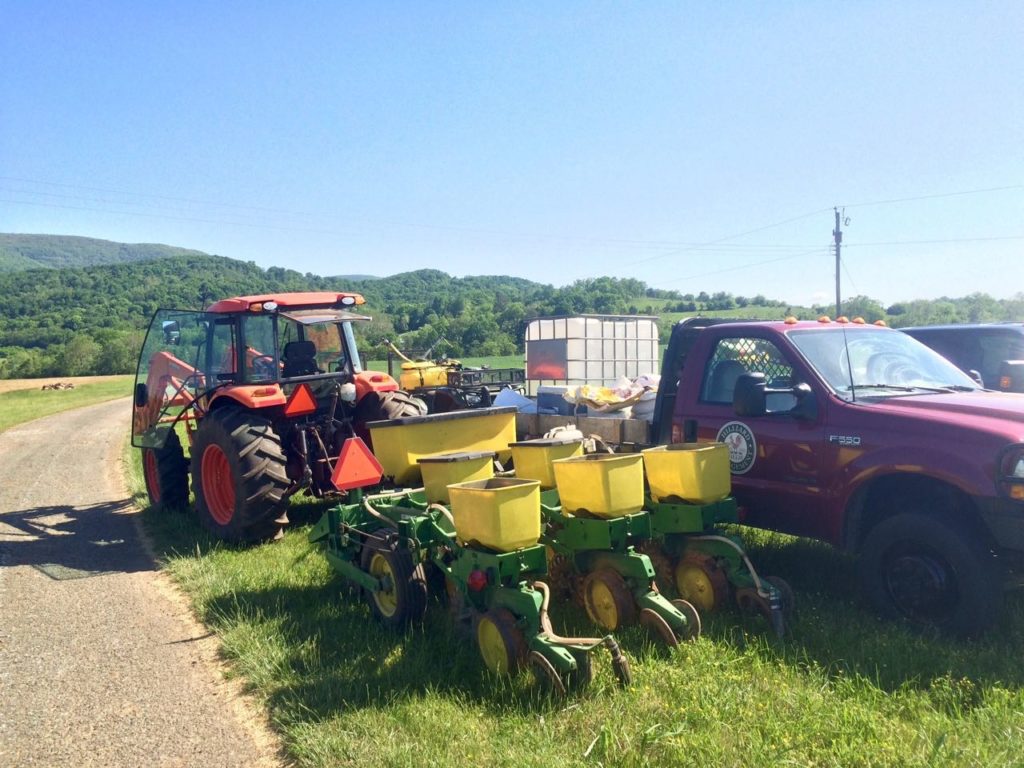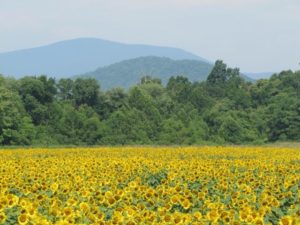It may be too early to get in the fields just yet, but it’s never too early to start planning. Winter is an excellent time to take soil samples and inventory fields for spring planting. This year we’re planting over 100 acres of sunflowers spread out over four counties, so logistics is a big part of our early year review. We always begin our planting season with sunflowers, which means that’s also where we start our planning & prep work. We visit all of the fields we’ll be planting to pull soil samples for analysis at the lab, and mark GPS coordinates of the fields and planting boundaries.
Soil sampling and mapping are the foundation for a good season, and it creates our “road map” that we follow as we solidify a schedule. Our target planting date for sunflowers is early to mid-May (when the soil temps normally reach 55 degrees), and when we review what it takes to prepare a new field: soil analysis, disking, roto-tilling, cultipacking, weed control – and the necessary rest time between some of the stages – we’re always reminded why we like to get a head start.
For repeat fields, our early season survey gives us time to review our planting notes from last season and fine-tune or tweak our plan as needed. Can we plant straight through the thatch with our no-till planter, or does the field need to be reworked? Are pH levels holding? Do we need to change our fertilizer mix? Were there any washout areas, and if there were, what do we need to do to fix those?
If you are thinking about any planting, custom farming, or wildlife projects for 2019 now is the perfect time to reach out to us and get the ball rolling. Our window of prep time for sunflowers is closing fast, and right after sunflowers we turn our attention to the next phase of planting, which this year includes soybeans, corn, chufa, and warm season grasses.
This…


Leads to efficiently doing this…


Which is all worth it when you get this…


And a few notes if you are a DIY person and interested in learning more about soil sampling and monitoring the health of your fields.
- Follow proper sampling technique to ensure you’re getting an accurate picture of the whole field, and not just a section of it. Virginia Tech has a helpful article on sampling that you can view here.
- Call your soil lab before planting to make sure you have the correct sampling bags & forms, and run any questions you have by them before sampling. A little extra time on the front end can save you from having to take the same sample(s) twice.
- Spend some time learning how to read and understand soil reports and the recommendations in them. Soil labs, local agronomists – and of course HELM – are all great places to take your questions.

